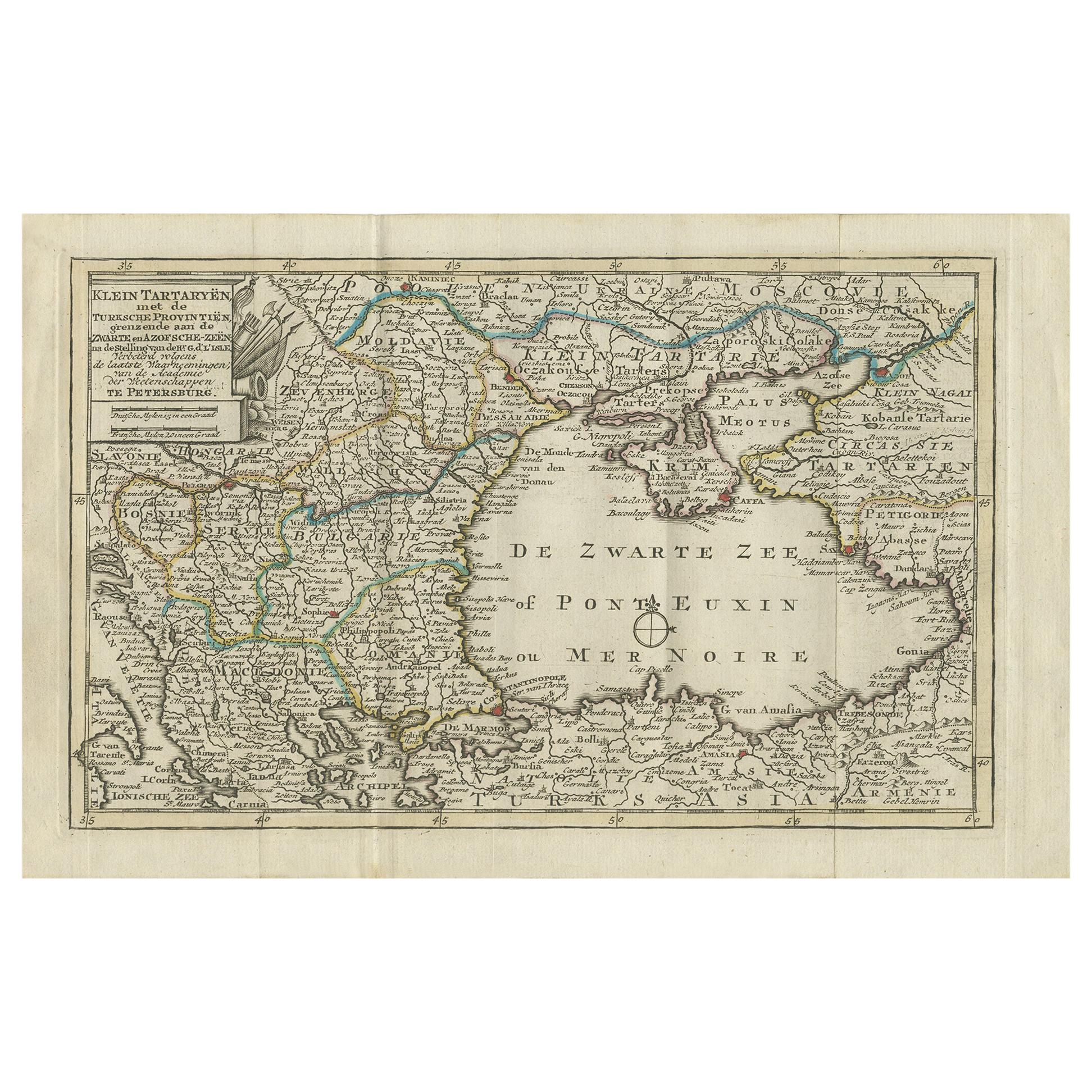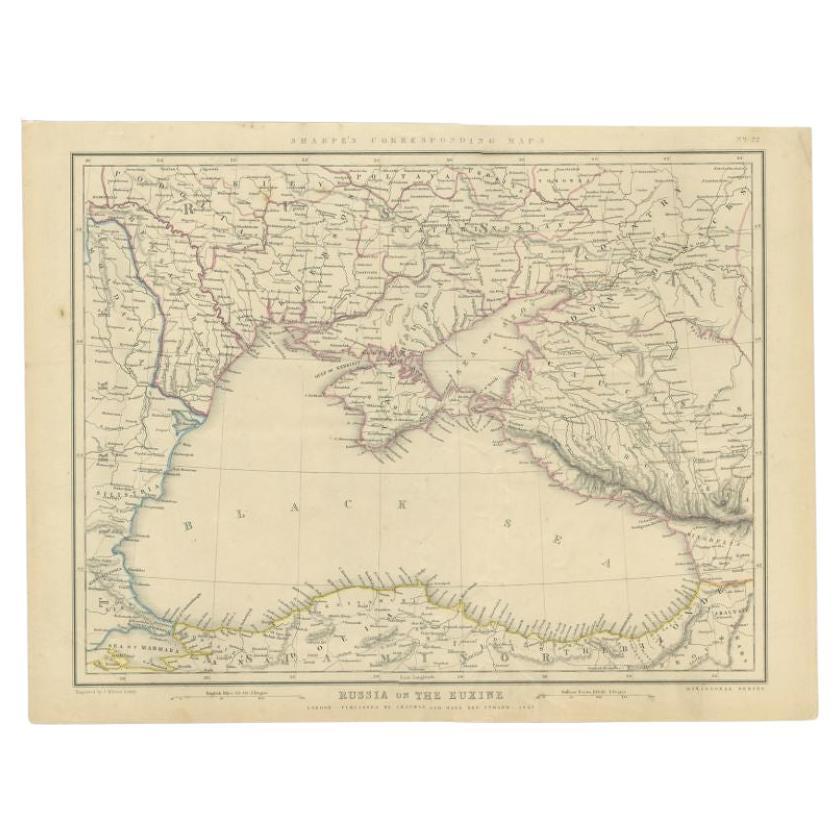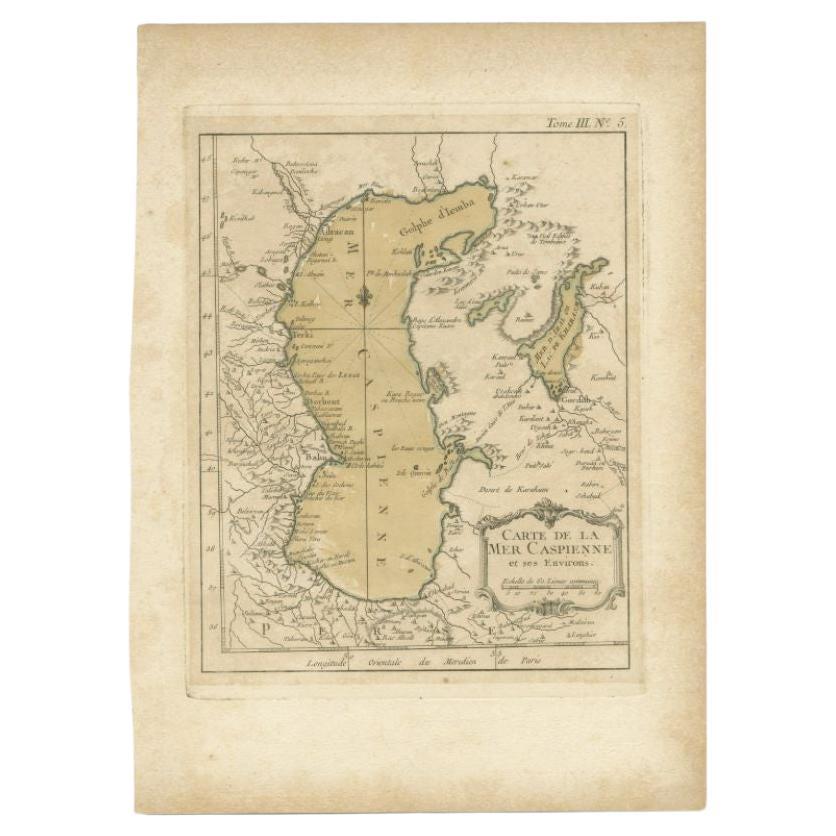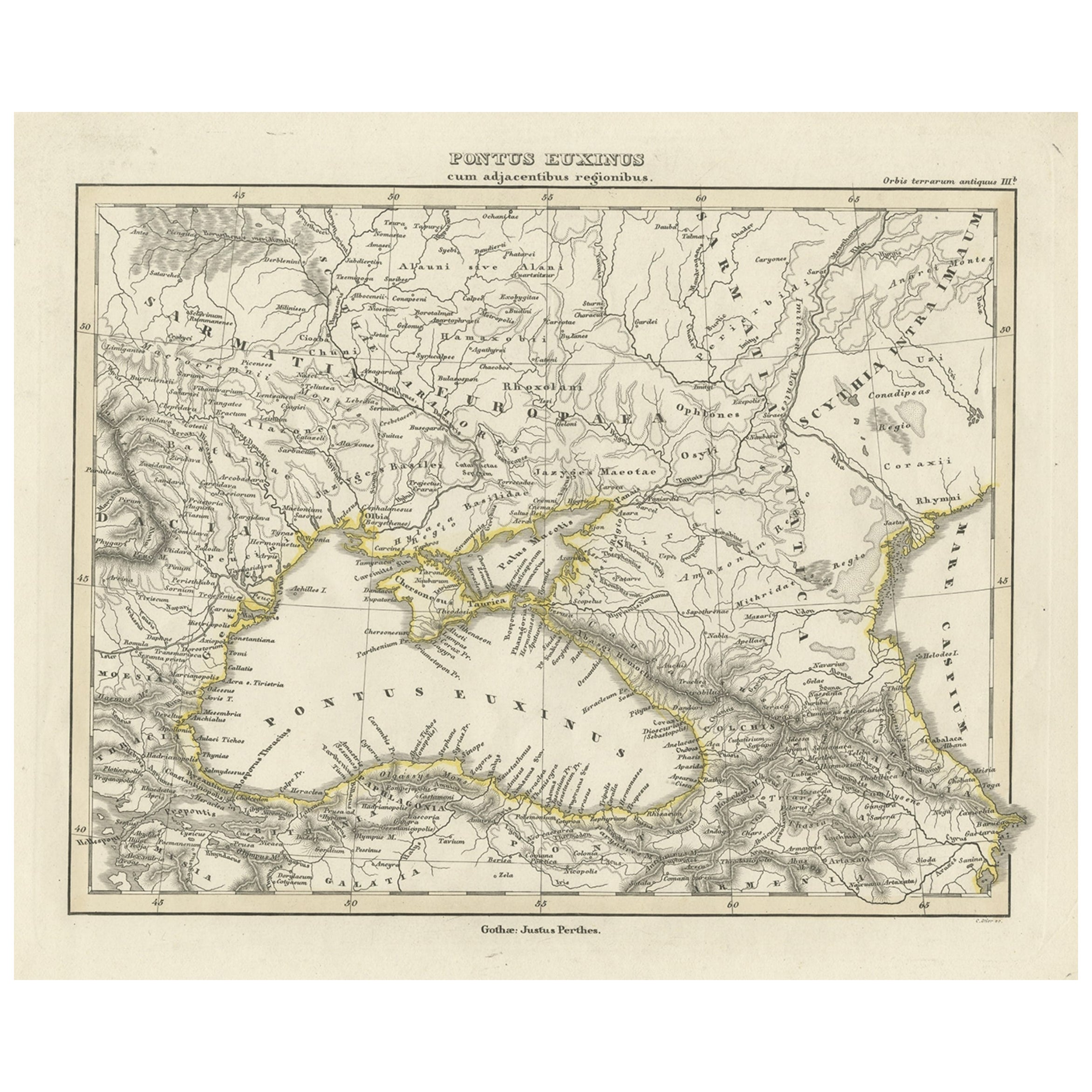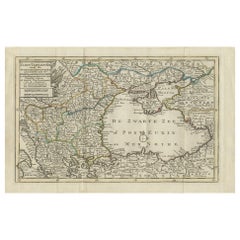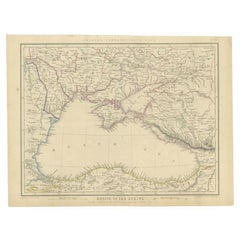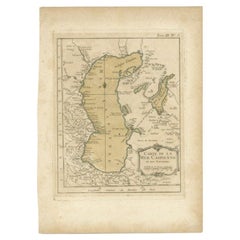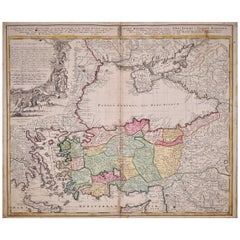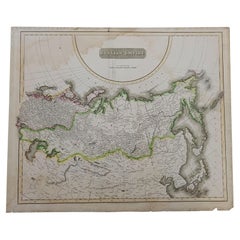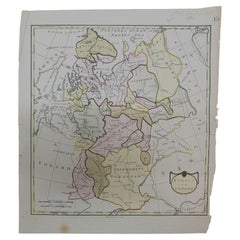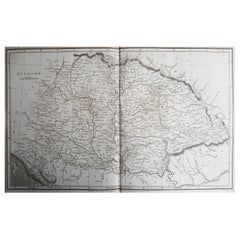Items Similar to Antique Map of the Black Sea and Crimea by Pierre Antoine Tardieu (1784-1869)
Want more images or videos?
Request additional images or videos from the seller
1 of 9
Antique Map of the Black Sea and Crimea by Pierre Antoine Tardieu (1784-1869)
$421.75
$527.1820% Off
£313.96
£392.4520% Off
€352
€44020% Off
CA$577.69
CA$722.1120% Off
A$642.51
A$803.1420% Off
CHF 335.50
CHF 419.3820% Off
MX$7,818.72
MX$9,773.4020% Off
NOK 4,284.86
NOK 5,356.0820% Off
SEK 4,018.44
SEK 5,023.0520% Off
DKK 2,679.65
DKK 3,349.5720% Off
Shipping
Retrieving quote...The 1stDibs Promise:
Authenticity Guarantee,
Money-Back Guarantee,
24-Hour Cancellation
About the Item
This is an original antique map titled "Carte de la Mer Noire ou Kara Degniz," depicting the Black Sea region. This map, created by Pierre Antoine Tardieu, highlights the geographical and political features surrounding the Black Sea, including parts of modern-day Turkey, Romania, Bulgaria, Ukraine, Russia, and Georgia.
Map Details:
- **Title**: Carte de la Mer Noire ou Kara Degniz
- **Creator**: Pierre Antoine Tardieu (1784-1869)
- **Publication Date**: Early 19th century
- **Dimensions**: Approximately 34.5 x 43.5 cm (13.5 x 17.25 inches)
- **Features**: The map showcases the Black Sea with detailed coastlines and significant geographical features such as rivers, mountain ranges, and cities. It includes the Sea of Azov and part of the surrounding territories. The title cartouche is centrally located at the top of the map, and the outlines are hand-colored.
Around the year 1800, the region surrounding the Black Sea was a complex and dynamic area influenced by several powerful empires and characterized by a mix of cultures, languages, and religions. Here’s a detailed overview of the region during that period:
### Political Landscape
1. **Ottoman Empire**:
- **Territory**: Controlled much of the southern coastline of the Black Sea, including what is now Turkey and parts of modern-day Bulgaria and Romania.
- **Influence**: The Ottoman Empire was a dominant force, although it was starting to experience internal decline and external pressures. The region was administratively divided into various provinces, with significant autonomy granted to local rulers.
2. **Russian Empire**:
- **Expansion**: The Russian Empire was expanding its territory southward and eastward. The northern coastline of the Black Sea, including parts of modern-day Ukraine and southern Russia, was under Russian control.
- **Key Cities**: Important cities like Sevastopol and Odessa began to grow in significance as naval and commercial hubs.
3. **Crimean Khanate**:
- **Annexation**: The Crimean Khanate, once a powerful vassal state of the Ottoman Empire, had been annexed by the Russian Empire in 1783. This marked a significant shift in the balance of power in the region.
4. **Habsburg Monarchy**:
- **Influence**: While not directly controlling Black Sea territories, the Habsburg Monarchy (Austria) had significant influence in the Balkans, which affected the political dynamics around the western parts of the Black Sea.
5. **Other Regions**:
- **Moldavia and Wallachia**: These were semi-autonomous principalities under Ottoman suzerainty, located in modern-day Romania. They played crucial roles as buffer states between the Ottoman and Russian Empires.
### Socio-Economic Conditions
1. **Trade and Commerce**:
- The Black Sea was a vital trade route connecting Europe with Asia. Key ports like Istanbul (Constantinople), Varna, and Trabzon were bustling centers of commerce.
- The grain trade was particularly important, with Ukrainian and Russian grain being shipped to various parts of Europe and the Mediterranean.
2. **Agriculture and Resources**:
- The region was rich in natural resources and fertile land, particularly in the areas surrounding the Danube Delta and the Crimean Peninsula. Agriculture, fishing, and later, mineral extraction were significant economic activities.
3. **Cultural Diversity**:
- The Black Sea region was a melting pot of ethnicities and cultures, including Turks, Greeks, Armenians, Bulgarians, Romanians, Tatars, and Slavs.
- Religious diversity was also notable, with Islam being predominant in Ottoman territories, Eastern Orthodoxy in Russian and Balkan areas, and smaller communities of Catholics, Jews, and other religious groups.
### Conflicts and Changes
1. **Russo-Turkish Wars**:
- The late 18th century saw several Russo-Turkish wars, with significant battles fought around the Black Sea. These conflicts often resulted in territorial changes and shifts in influence.
- The Treaty of Jassy (1792) ended one such war, confirming Russian dominance over the northern Black Sea coast and parts of the Caucasus.
2. **Decline of the Ottoman Empire**:
- The Ottoman Empire was struggling with internal decay, corruption, and increasing nationalist movements within its European territories.
- Reforms and attempts to modernize the military and administration were ongoing but faced significant resistance and mixed success.
3. **Napoleonic Wars**:
- The early 19th century was marked by the Napoleonic Wars, which had indirect effects on the Black Sea region through shifting alliances and the involvement of European powers.
### Summary
The Black Sea region around 1800 was a strategically important and culturally diverse area at the crossroads of several powerful empires. It was characterized by significant political changes, economic activity centered on trade and agriculture, and a rich tapestry of ethnic and religious communities. The interplay between the Ottoman and Russian Empires, along with the influence of other European powers, set the stage for the geopolitical dynamics that would continue to shape the region in the 19th century and beyond.
Condition Overview:
1. **Paper Quality**: The paper shows some signs of aging, such as slight yellowing, which is typical for antique maps. There are no major tears or damage visible.
2. **Edges and Corners**: The edges are slightly worn, with minor fraying and small tears, especially near the center fold. These imperfections do not significantly impact the overall readability or aesthetic value.
3. **Center Fold**: A center fold is present, which is common for maps of this period that were often folded for storage or publication. The fold appears intact without significant separation or damage.
4. **Color and Print Quality**: The hand-colored outlines remain vibrant and clear, highlighting the borders of different regions. The print quality is excellent, with sharp, legible text and detailed illustrations.
5. **Staining and Spots**: There are a few spots and stains, particularly near the edges and along the fold. These do not obscure any critical details of the map.
Historical and Artistic Value:
Pierre Antoine Tardieu was a renowned French engraver and cartographer, known for his detailed and high-quality maps. His use of steel engraving allowed for greater precision and detail compared to earlier methods. Tardieu's maps were well-regarded and often used for educational and reference purposes.
- Dimensions:Height: 16.23 in (41.2 cm)Width: 21.26 in (54 cm)Depth: 0.01 in (0.2 mm)
- Materials and Techniques:Paper,Engraved
- Period:
- Date of Manufacture:1802
- Condition:Good condition with minor age-related wear. Hand-colored boundaries are well-preserved, enhancing the clarity of regions and features. Fold lines and edge wear are visible. Study the images carefully.
- Seller Location:Langweer, NL
- Reference Number:Seller: BG-13769-291stDibs: LU3054340565322
About the Seller
5.0
Recognized Seller
These prestigious sellers are industry leaders and represent the highest echelon for item quality and design.
Platinum Seller
Premium sellers with a 4.7+ rating and 24-hour response times
Established in 2009
1stDibs seller since 2017
2,510 sales on 1stDibs
Typical response time: <1 hour
- ShippingRetrieving quote...Shipping from: Langweer, Netherlands
- Return Policy
Authenticity Guarantee
In the unlikely event there’s an issue with an item’s authenticity, contact us within 1 year for a full refund. DetailsMoney-Back Guarantee
If your item is not as described, is damaged in transit, or does not arrive, contact us within 7 days for a full refund. Details24-Hour Cancellation
You have a 24-hour grace period in which to reconsider your purchase, with no questions asked.Vetted Professional Sellers
Our world-class sellers must adhere to strict standards for service and quality, maintaining the integrity of our listings.Price-Match Guarantee
If you find that a seller listed the same item for a lower price elsewhere, we’ll match it.Trusted Global Delivery
Our best-in-class carrier network provides specialized shipping options worldwide, including custom delivery.More From This Seller
View AllAntique Map of the Black Sea and Surroundings by Keizer & de Lat, 1788
Located in Langweer, NL
Antique map titled 'Klein Tartaryën met de Turksche Provintiën (..)'. Uncommon original antique map of the Black Sea and surroundings. This map originates from 'Nieuwe Natuur- Geschi...
Category
Antique Late 18th Century Maps
Materials
Paper
$335 Sale Price
20% Off
Antique Map of the Persian Gulf and Caspian Sea Region by R. Bonne, 1780
Located in Langweer, NL
Antique print titled 'Carte de la Perse, de la Georgie, et de la Tartarie Independante'. Shows the region from the Persian Gulf and Caspian Sea in the wes...
Category
Antique Late 18th Century French Maps
Materials
Paper
Antique Map of the Black Sea and Surroundings by Sharpe, 1849
Located in Langweer, NL
Antique map titled 'Russia on the Euxine'. Old map of the Black Sea and the surrounding (Russia). This map originates from 'Sharpe's Corresponding Atlas (..)' by J. Sharpe. Artists and Engravers: Published by Chapman and Hall...
Category
Antique 19th Century Maps
Materials
Paper
$91 Sale Price
20% Off
Antique Map of the Caspian Sea and Surroundings by Bellin, 1764
Located in Langweer, NL
Antique map titled 'Carte de la Mer Caspienne et ses Environs'. Old map depicting the region of the Caspian Sea. This map originates from 'Le Petit Atlas M...
Category
Antique 18th Century Maps
Materials
Paper
$179 Sale Price
20% Off
Old Map of the Black Sea, The Krim, Ukraine, Russia, etc in Historic Times, 1848
Located in Langweer, NL
Antique map titled 'Pontus Euxinus'. Old map of the black Sea and surroundings originating from 'Orbis Terrarum Antiquus in usum Scholarum'.
Artists and Engravers: Published by J...
Category
Antique 1840s Maps
Materials
Paper
$230 Sale Price
20% Off
Black Sea & Eastern Mediterranean Map: Eastern Roman Empire, Tardieu Atlas, 1802
Located in Langweer, NL
Antique Map with Title: "Partie Orientale de l'Empire Romain ou du Monde connu des Anciens"
Publication Details:
- **Atlas Title:** Nouvel Atlas Universel de Géographie Ancienne e...
Category
Antique Early 1800s Maps
Materials
Paper
$498 Sale Price
20% Off
You May Also Like
Hand-Colored 18th Century Homann Map of the Black Sea, Turkey and Asia Minor
By Johann Baptist Homann
Located in Alamo, CA
An attractive original early 18th century hand-colored map of the Black Sea and Turkey entitled "Carte de L'Asie Minevre ou de la Natolie et du Pont Evxin Tiree des Voyages et des Ob...
Category
Antique Early 18th Century German Maps
Materials
Paper
1814 Map of "Russian Empire" Ric.r032
Located in Norton, MA
1814 Map of
"Russian Empire"
Ric.r032
Russian Empire. Description: This is an 1814 John Thomson map of the Russian Empire. The map depicts the region from the Baltic Sea, Prussia, and Sweden to the Aleutian Islands and from the Arctic Ocean to the Yellow River. Highly detailed, myriad cities, towns, and villages are labeled throughout, including St. Petersburg, Moscow, Minsk, Kiev, and Kharkov. Rivers and mountain ranges are also identified, as are islands and numerous locations along the coastlines. It is important to note that the long-disputed sea between Korea and Japan is identified as the 'Sea of Japan.
Historical Context:
In 1815, Tsarist Russia emerged from the Napoleonic Wars economically insolvent and politically fearful of the Revolutionary fervor that had just swept through Europe. In order to shore up Russia's economic position, the Tsars began an aggressive series of expansions into the Caucuses and Central Asia that would vastly increase the landmass of the Russian Empire.
Publication History
Thomson maps are known for their stunning color, awe inspiring size, and magnificent detail. Thomson's work, including this map, represents some of the finest cartographic art...
Category
Antique 19th Century Unknown Maps
Materials
Paper
1790 Thomas Stackhouse Map, Entitled "Russia in Europe, " , Ric.a004
Located in Norton, MA
1790 Thomas Stackhouse map, entitled
"Russia in Europe"
Ric.a004
Stackhouse, Thomas
Russia in Europe [map]
London: T. Stackhouse, 1783. Map. Matted hand-colored copper engraving. Image size: 14.5 x 15.25 inches. Mat size: 22.75 x 23.75 inches. A beautiful example of this map of Eastern Europe...
Category
Antique 17th Century Unknown Maps
Materials
Paper
Original Antique Map of Hungary, Arrowsmith, 1820
Located in St Annes, Lancashire
Great map of Hungary
Drawn under the direction of Arrowsmith.
Copper-plate engraving.
Published by Longman, Hurst, Rees, Orme and Brown, 1820
Unframed.
Category
Antique 1820s English Maps
Materials
Paper
Antique French Map of Asia Including China Indoneseia India, 1783
Located in Amsterdam, Noord Holland
Very nice map of Asia. 1783 Dedie au Roy.
Additional information:
Country of Manufacturing: Europe
Period: 18th century Qing (1661 - 1912)
Condition: Overall Condition B (Good Used)...
Category
Antique 18th Century European Maps
Materials
Paper
$648 Sale Price
20% Off
Original Antique Map of Ancient Greece, Achaia, Corinth, 1786
Located in St Annes, Lancashire
Great map of Ancient Greece. Showing the region of Thessaly, including Mount Olympus
Drawn by J.D. Barbie Du Bocage
Copper plate engraving by P.F Tardieu
Original hand color...
Category
Antique 1780s French Other Maps
Materials
Paper
More Ways To Browse
Istanbul Antique
Map Storage
18th Century Naval
Antique Tapestry Ottoman
Antique Fishing Collectables
Modern Storage Ottoman
Folding Ruler
Small French Ottoman
Antique Greek Pots
Crimean War
Antique Turkish Pots
4 X 5 Tapestries
Antique Map Storage
Antique Ottoman With Storage
Antique Greece Pot
Greek Key Ottoman
Crimean Tatar
Silver Over Copper
